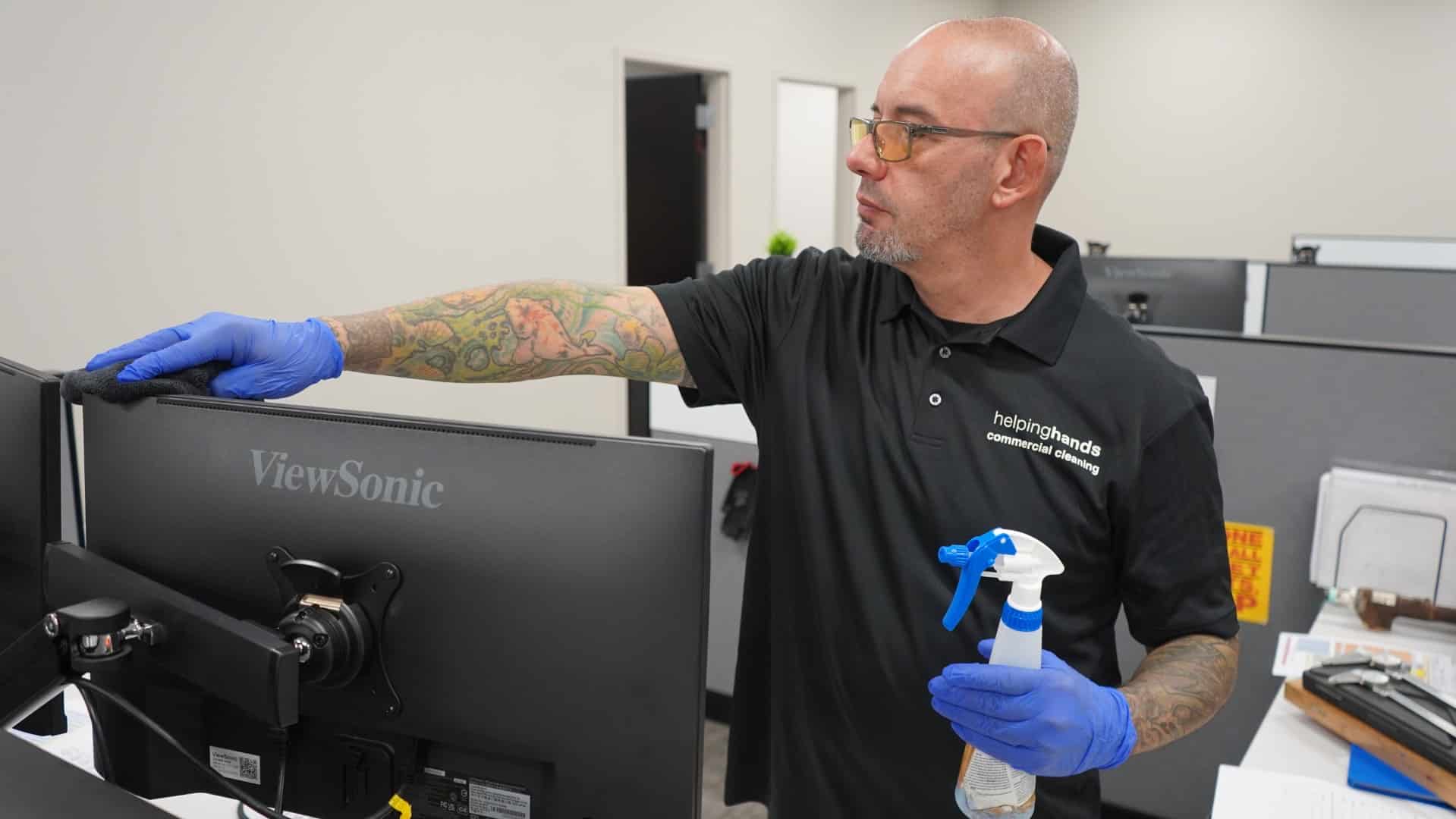Many people spend their workdays at their offices. That is why it’s crucial to maintain the cleanliness of your space with office cleaning services to increase productivity and, consequently, your company’s growth.
Additionally, if employees work in a tidy environment, they are less likely to become ill, increasing the likelihood of leaving the company. However, if they have clean, excellent working circumstances, they will remain in their positions for longer, which will help the business expand.
In this post, we will discuss seven practical ways to keep the workplace clean and hygienic for increased productivity and safety.
1. Create a Comprehensive Cleaning Schedule
Everyone in the office must consider cleanliness to be a shared obligation. Create detailed cleaning schedules and guidelines that outline who is in charge of what and when. Regular and impromptu cleaning of personal and communal workstations wastes time and effort and is ineffective and insufficient in guaranteeing that every area is always safe.
Make sure you have the correct tools and cleaners available because surface cleaning is necessary to stop the spread of germs.
2. Identify High Traffic and High Touch Areas
The key to maintaining cleanliness and preventing the transmission of germs is to regularly and consistently clean and disinfect high-traffic areas, desks, and other surfaces. However, in today’s health-conscious society, you should never let your guard down.
It is advised to pay more attention to these areas throughout the cold and flu season. High-touch and high-traffic areas should always be kept as clean and well-maintained as possible. The improved staff wellness and decreased sick days can completely offset the higher expenditures of a strict cleaning regimen.
3. Ban Food in Certain Areas
Establish explicit rules regulating the use of food and beverages in specific locations to minimize food crumbs and spills that could endanger work, tools, and products as well as pose potential safety issues. Make sure to include areas where food and drink may be permitted in your comprehensive cleaning programs, such as break rooms, cafeterias, or individual cubicles.
In places where food and drinks are allowed, ensure that each person cleans and washes their cups, utensils, and dishes after using them.
That’s because leftover food, crumbs, and packaging can attract pests and promote bacterial growth, even when put in wastebaskets.
All dishes should be washed in warm, soapy water, followed by rinsing and drying. Wipe down the tea preparation and snack area after usage, and hang the towels to dry.
4. Ensure Access to Cleaning Supplies
Some companies may have just one hand sanitizer available in the restroom. Provide tissues, cleaning wipes, and hand sanitizers to your staff so that the workplace is clean.
Keep these essentials easily accessible to everyone in the office so they can sanitize their hands without having to go to the restroom.
Let’s assume that after taking out the garbage, a staff member wishes to wash their hands.
The entrance and exit points of your office should both have hand sanitizers properly placed there. Doing this will remind them to regularly wash their hands.
5. Regular Inspections of Workplaces and Common Areas
Implement scheduled inspections of all common spaces and work areas to help reduce mishaps, injuries, and diseases. Regular workplace inspections aid in locating and documenting hazards for corrective action. Workers and managers can express their concerns during inspections. They help identify and minimize potential hazards and improve your understanding of the processes, duties, and tasks carried out at work.
Pay close attention to everything that could lead to dangerous or unhealthy situations due to misuse, abuse, stress, wear, impact, vibration, heat, corrosion, or chemical reaction. Include spaces like parking lots, rest areas, office storage spaces, and locker rooms where no regular work is done.
Regular inspections of your office, including the staff, tools, workflow, and physical space, ought to cover:
- Noise
- Vibration
- Lighting
- Waste
- Temperature
- Ventilation
In addition to this, ensure that all areas of the office are regularly cleaned and maintained to reduce the risk of health issues. Services such as commercial floor cleaning and janitorial services play a crucial role in maintaining cleanliness and hygiene. Areas like workstations, restrooms, and shared spaces can accumulate waste, dust, and bacteria, which may pose health risks if not consistently managed. Deep cleaning services can provide more thorough and specialized cleaning in high-traffic areas or after construction. Cleanliness plays a crucial role in the safety and well-being of employees, improving both hygiene and overall office morale.
6. Promote Workplace Hygiene
It is crucial to educate everyone in the company on the importance of maintaining proper hygiene. The accumulation of clutter and dust makes it simple for illnesses, bacteria, and viruses to spread.
Everyone should be responsible for keeping the workplace clean; thus, it shouldn’t be taken for granted. Each employee’s personal hygiene could have an impact on coworkers and on the environment as a whole.
7. Organize Cables
Organizing your cables is one of the things that people frequently overlook.
However, if left in hazardous regions, this could eventually become dangerous and present a threat. It can be more difficult to clean an office with loose cords, so arrange your cables neatly.
Get Professional Help with Helping Hands Commercial Cleaning in Bloomingdale IL
Using a reputable professional cleaning company like Helping Hands is the best thing you can do to maintain your workplace tidy and safe.
Our office cleaning services in Bloomingdale IL help businesses run cleaner, safer, and more successfully with full-service commercial sanitation and office disinfection services. Our staff at Helping Hand Commercial Cleaning will work with you to determine which services your company could find useful and how frequently you will require supplies.


